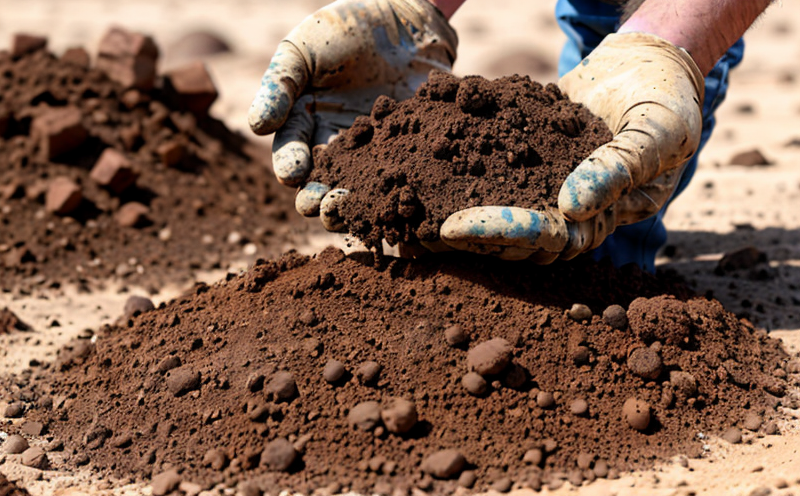ISO 17892 Part 11 Permeability Determination of Soils
The ISO 17892-11 standard provides a method for determining the hydraulic permeability of soils and overburden materials, which is critical in mining operations to ensure safe and efficient processing. This test is particularly relevant when characterizing the soil and overburden to understand its flow characteristics under pressure. Understanding these properties helps in selecting appropriate liners, filters, and containment systems that can withstand high pressures without failure.
Permeability testing is essential for various mining activities such as tailings management, waste disposal, and containment wall design. The results of this test are used to predict the flow behavior of fluids through soil layers, which is crucial for designing effective containment structures and managing potential environmental impacts. In addition, it aids in selecting liners that can withstand high pressures without compromising safety or efficiency.
The procedure outlined in ISO 17892-11 involves several steps: sample preparation, conditioning the specimen under controlled conditions, applying a hydraulic gradient, measuring flow rates, and calculating permeability coefficients. This standardized approach ensures consistent results across different laboratories, which is vital for regulatory compliance and quality assurance.
The application of this test extends beyond mining into other sectors such as civil engineering, environmental management, and waste disposal. The ability to accurately determine the hydraulic properties of soil samples allows engineers to make informed decisions regarding containment systems, liner design, and overall site planning. This ensures that facilities are constructed with materials capable of handling expected pressures effectively.
Understanding the permeability characteristics of soils is essential for predicting how these materials will behave under various conditions during mining operations. For instance, knowing the permeability helps in designing liners that can withstand high pressure without compromising safety or efficiency. It also plays a crucial role in managing potential environmental impacts by ensuring that fluids do not leak into surrounding areas.
Moreover, the test results provide valuable insights for tailings management and waste disposal strategies. By accurately determining soil properties using ISO 17892-11, mining companies can optimize their processes while minimizing risks associated with improper containment systems or liner selection.
The importance of this test cannot be overstated in ensuring safe and efficient mining operations. Accurate determination of hydraulic permeability is key to selecting appropriate materials for liners and filters that will perform optimally under pressure. This knowledge contributes significantly to reducing environmental impacts by preventing leaks into surrounding areas.
Applied Standards
| Standard | Description |
|---|---|
| ISO 17892-11 | Hydraulic permeability determination of soils and overburden materials. |
| ASTM D4593 | Determination of hydraulic conductivity using the constant-head infiltration method. |
| EN 10268-1 | Hydraulic testing of soil samples for use in geotechnical engineering. |
| Standard | Description |
|---|---|
| IEC 62391 | Determination of hydraulic conductivity using the falling-head infiltration method. |
| ASTM D5084 | Determination of hydraulic conductivity in saturated soils using a constant-head permeameter. |
| ASTM D6027 | Determination of hydraulic conductivity in saturated soils using a falling-head permeameter. |
Why Choose This Test
Selecting the appropriate test for your needs is crucial when determining the hydraulic permeability of soil and overburden materials. ISO 17892-11 offers a standardized approach that ensures consistent results across different laboratories, making it an essential tool for regulatory compliance and quality assurance.
- Ensures accurate determination of hydraulic properties under controlled conditions.
- Provides reliable data for selecting appropriate containment systems and liners.
- Aids in managing potential environmental impacts by preventing leaks into surrounding areas.
The test is particularly useful for tailings management, waste disposal, and containment wall design. By accurately determining soil properties using ISO 17892-11, mining companies can optimize their processes while minimizing risks associated with improper containment systems or liner selection.
Additionally, the procedure outlined in this standard involves several steps: sample preparation, conditioning the specimen under controlled conditions, applying a hydraulic gradient, measuring flow rates, and calculating permeability coefficients. This standardized approach ensures consistent results across different laboratories, which is vital for regulatory compliance and quality assurance.
The ability to accurately determine the hydraulic properties of soil samples allows engineers to make informed decisions regarding containment systems, liner design, and overall site planning. This ensures that facilities are constructed with materials capable of handling expected pressures effectively.
Competitive Advantage and Market Impact
- Standardized approach ensuring consistent results across different laboratories.
- Facilitates regulatory compliance and quality assurance.
- Aids in optimizing processes while minimizing risks associated with improper containment systems or liner selection.
- Provides reliable data for selecting appropriate containment systems and liners.
The accurate determination of soil permeability is essential for predicting how these materials will behave under various conditions during mining operations. By ensuring that facilities are constructed with materials capable of handling expected pressures effectively, this test contributes significantly to reducing environmental impacts by preventing leaks into surrounding areas.
Moreover, the test results provide valuable insights for tailings management and waste disposal strategies. Accurate determination of soil properties using ISO 17892-11 ensures that mining companies can make informed decisions regarding liner design and overall site planning.





